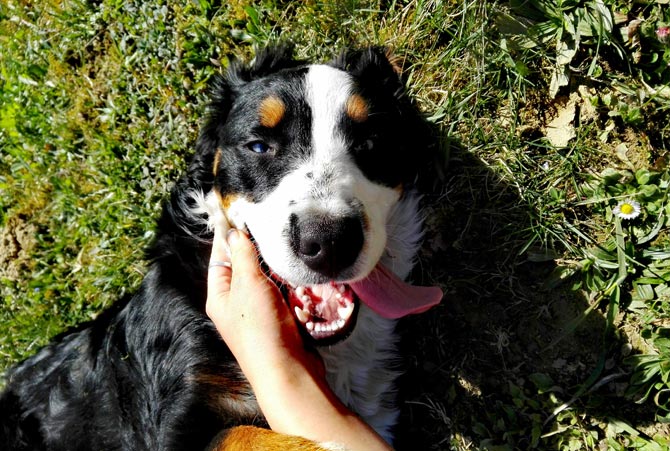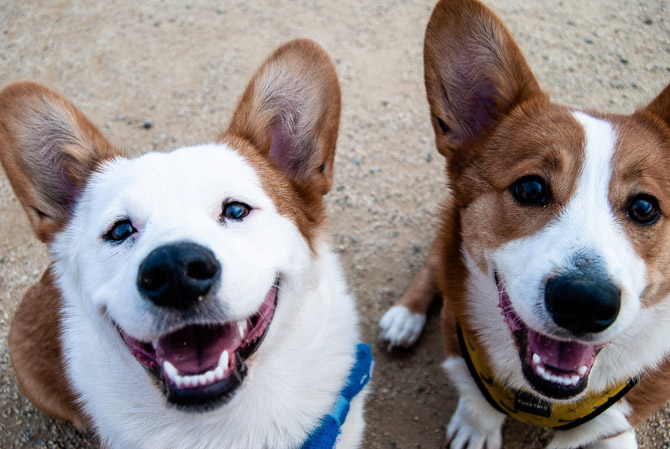Every loving pet parent wants his or her canine chum to grow into a fit and well-socialised adult dog. However, there are a few key steps that will help ensure you raise a happy and healthy dog.
Certainly, there are some very important actions that are needed during puppyhood to help give your pooch the best start in life. Nonetheless, if you have adopted an older dog, there are still lots of rules to implement to help you raise a healthy dog.
What’s more, the fact you’re reading this post shows you’re a good pet parent who wants to do the very best for your four-legged friend.
Know the essentials
Raising a healthy dog is akin to raising a well-rounded child (except it’s less likely your child will lick you!). It’s vital to provide the essentials. In the case of dogs this comes down to the following key things:
- Food & water
- Shelter
- Training
- Play
- Exercise
- Love and care
All sounds straightforward so far, right? Yet, dogs—just like humans—have minds of their own and can be quite strong-willed. While this might make things challenging, it’s also a key reason why we love them.
It can be helpful to remind yourself that things won’t always go to plan; remaining calm and patient is paramount. Plus, the hard work you put in during the early days will pay off in the long term when you have a wonderfully well-behaved and loving dog.
Food, glorious food
When it comes to raising a healthy dog it is no surprise that food is super important. As such, it’s worthwhile spending some time researching what food is best for your particular dog.
Wondering whether a raw food diet would be beneficial for your barking buddy? Check out this post.
Need a general overview of what to feed your pet without breaking the bank? Take a look at this post (it also tells you which foods to avoid).
Ultimately, you want to make certain your pooch has a diet that’s high in essential nutrients to help keep your dog healthy. Experts suggest avoiding pet food that lists grain as either the first or second ingredient. Also, the main protein should be named (i.e. salmon or chicken). This way you know your dog is getting a better quality of food.
Ideally, you want to feed your dog a good balance of proteins, carbohydrates, vitamins, minerals, fats and oils. Whether you choose to feed your canine chum a raw diet, wet dog food, dry dog food or a mix — always read the ingredients.
Keep a close eye on your pooch
Don’t freak out; you’re not expected to monitor your dog’s every move. However, it’s essential to recognise that your dog is well versed in non-verbal communication.
The better you understand your dog’s ‘normal’ behaviour, the easier it’ll be to recognise when something is not quite right. For example, your dog might tell you you’re not feeding him or her the right food by a change in toilet habits.
He or she might communicate pain by constantly licking its limb. Other bodily cues, such as a change in the position of your dog’s ears, might indicate physical or mental distress.
Keeping an eye on your dog’s general behaviour is vital for all dogs. However, if your dog has a health condition and is on medication this is even more important.
Training tips
Training your dog is all about routine. When it comes to raising a healthy dog, you need to start with a few training essentials. For example, training your dog when and where to go to the toilet is a no-brainer. It’s a must!
You also need to train your dog to recognise where it can and cannot sleep. In its bed — yes! On your brand new sofa — no!
Dogs are pretty smart and learn quickly. For example, it won’t take long for your precious pooch to learn what it means when you pick up and shake his lead. Yes, “walkies”!
However, walking well while on the lead might require a bit of extra patience and training! Check out this guide to walking and running your dog the right way.
Another important aspect of training to mention is crate training. Dogs can be trained to view their crate as a place of comfort and safety and this can come in very useful. To understand the potential benefits of crate training and how it can be used in a positive way, take a read of this post.

Photo by Doloresz Dombi on Unsplash
Play and exercise are paramount
Both play and exercise go hand in hand with raising a healthy dog. Yet, just like us humans, don’t be surprised if your dog doesn’t love every game or exercise you introduce.
Hands up if you like running? No doubt some of you will be frantically waving your hands in the air while others will have their hands firmly in their lap. Okay, sure, most dogs do like running (so maybe that wasn’t the best example) but while some dogs love playing fetch others will be less enthusiastic.
My border terrier loves playing fetch for all of about 5 minutes and then he gives up and wanders off. Take him swimming in the ocean though and you’d think he were a dolphin!
The trick is to expose your dog to lots of different games, exercises and experiences while they’re young. If you can see they really don’t like something, don’t push them.
There are loads of ways to play with and exercise your dog. Find something you enjoy doing together and make sure you do it regularly. Ultimately, as long as you get your dog outdoors or at the very least doing something physically active daily your dog will be healthy.
TIP: Mental stimulation is equally as important as physical exercise. Dog enrichment can be really useful as a way of satisfying your dog’s innate behaviour and keeping his or her mind stimulated.
Doggy love
Loving your dog isn’t all about treats and cuddles (although I’m sure your pooch will adore both these things). Being a loving dog owner is about taking responsibility for the health, happiness and welfare of your four-legged friend.
This means understanding the importance of regular (annual) vet checks and recognising the preventative measures you can take to keep your dog well.
Knowing the main health issues affecting dogs can help you protect your pooch. For example, pet obesity is a major issue worldwide. As such, recognising the signs of obesity is vital to helping your dog maintain a healthy weight. Likewise, looking into pet insurance and making certain your home is safe and secure is part of loving your dog.
Of course, a few cuddles and kisses also go a long way to helping your pet feel cared for and loved.
So what you waiting for, go give Fido a belly scratch!
Related posts:
Main image source: gotdaflow on Unsplash







Leave A Comment